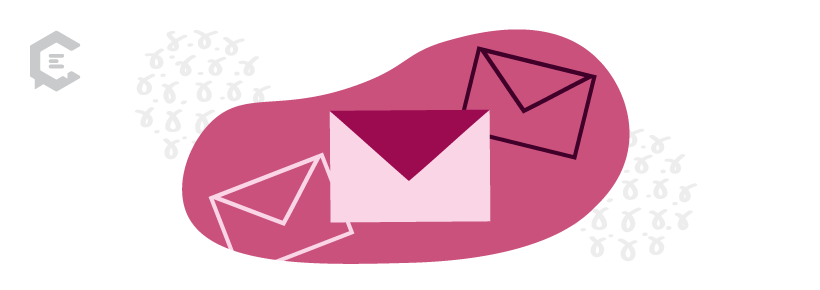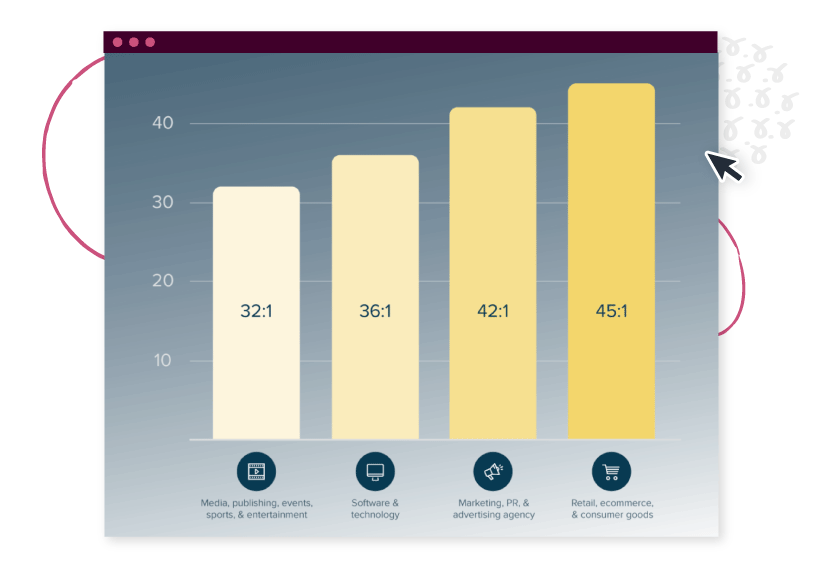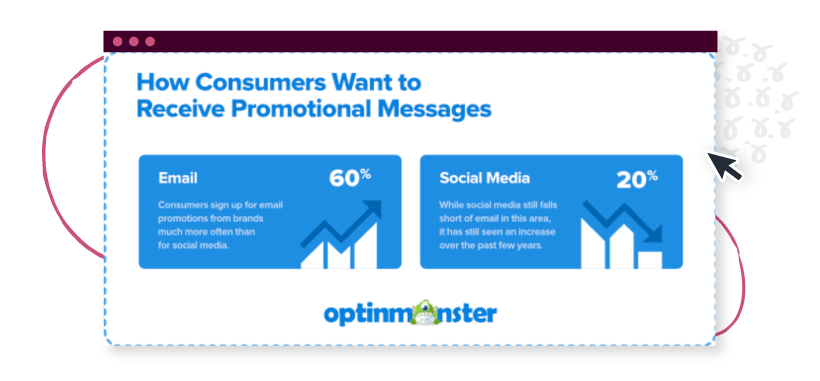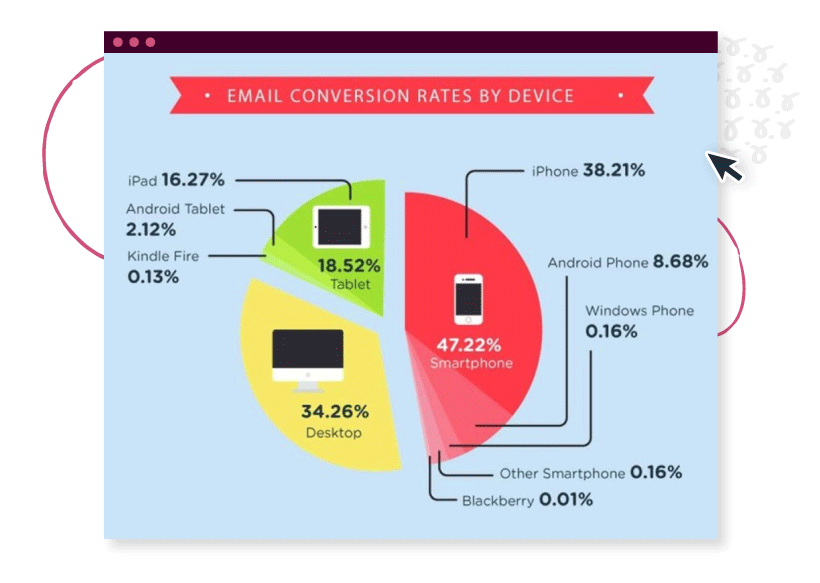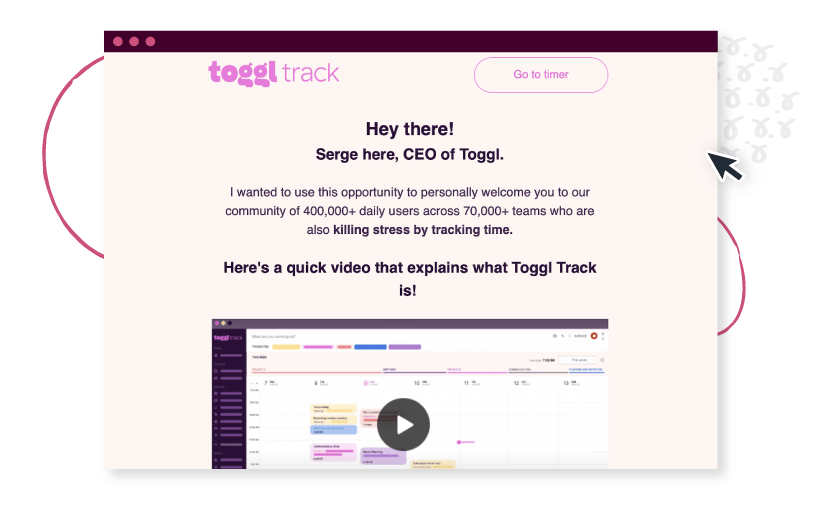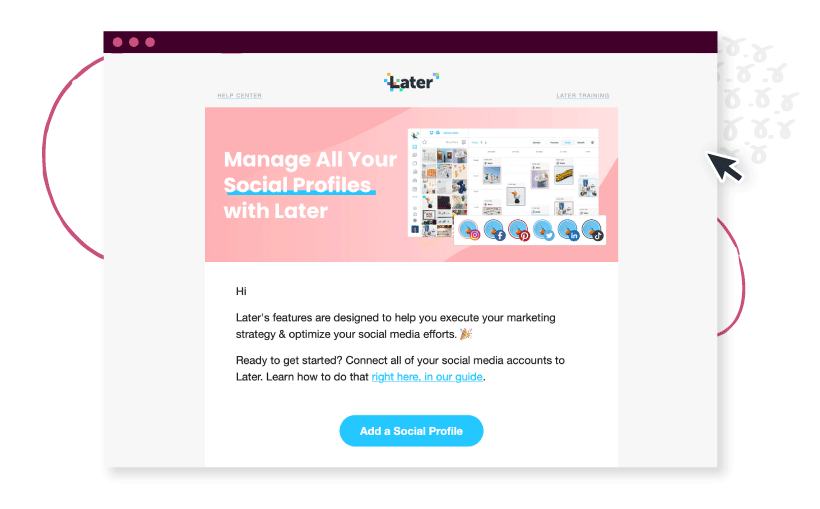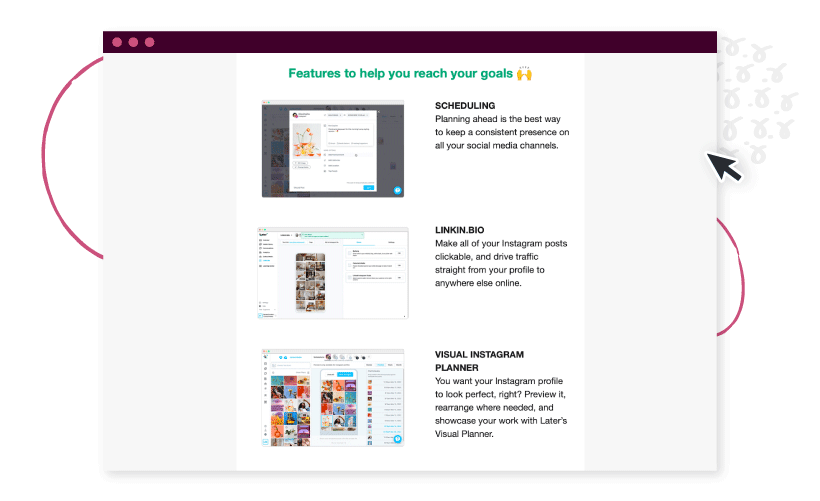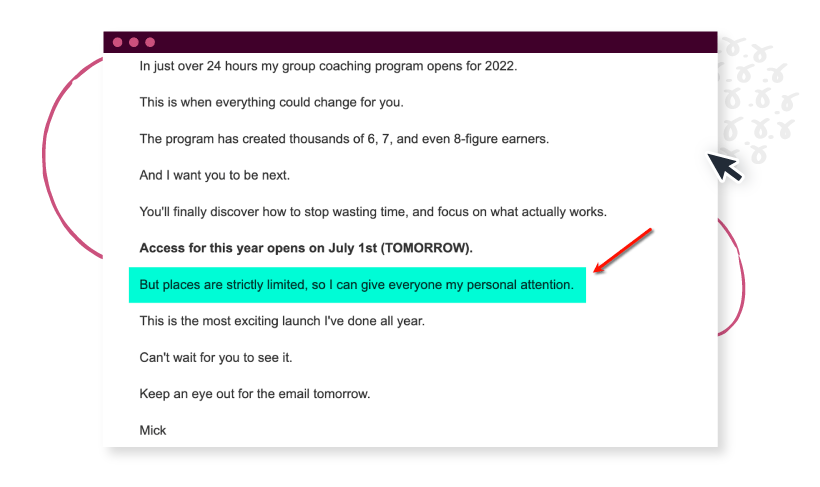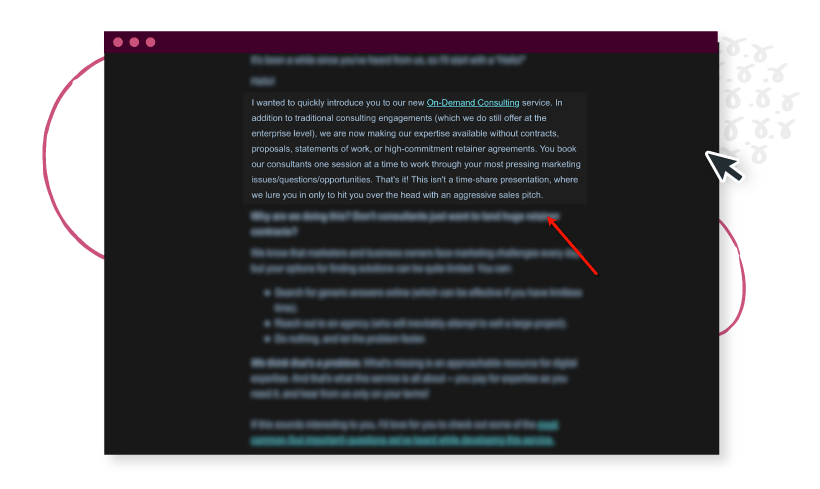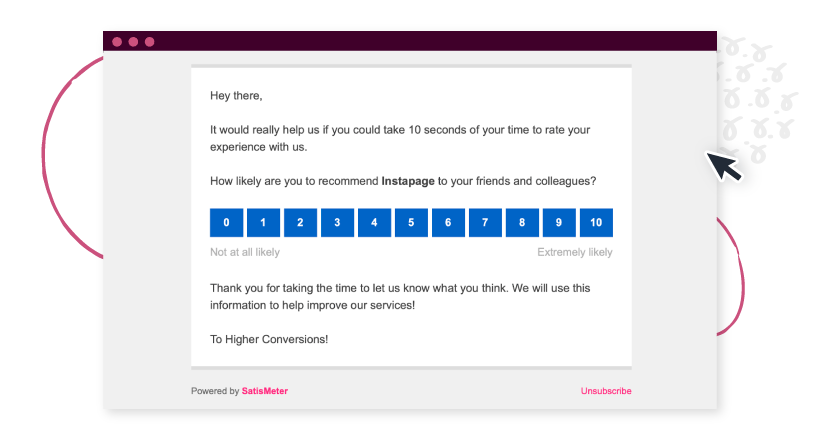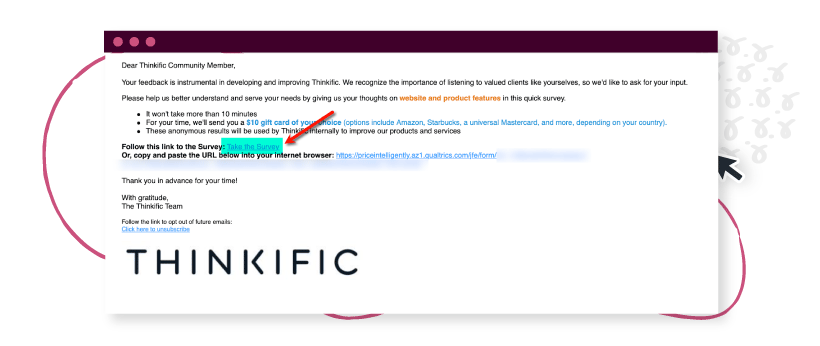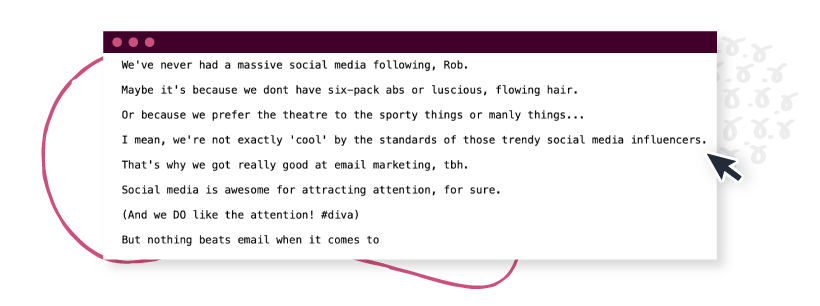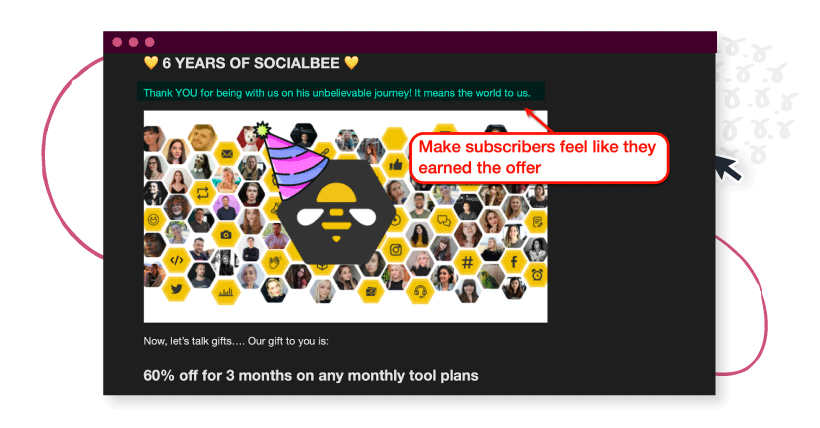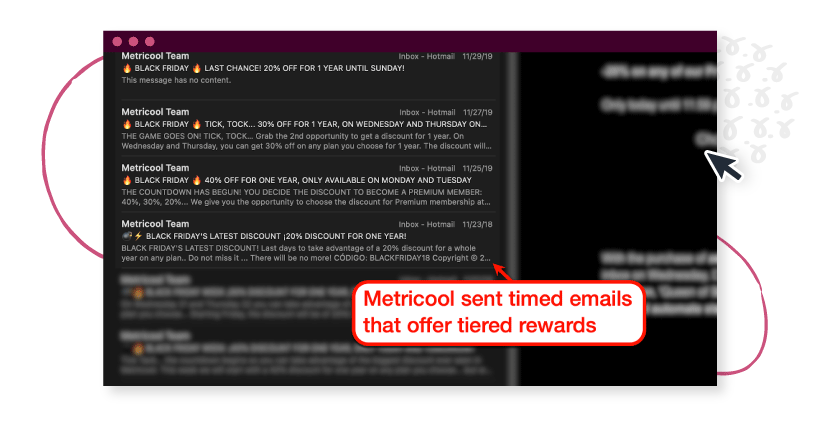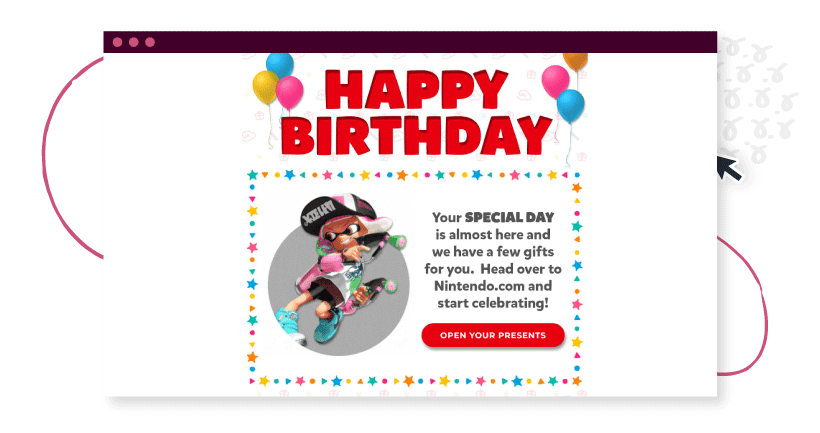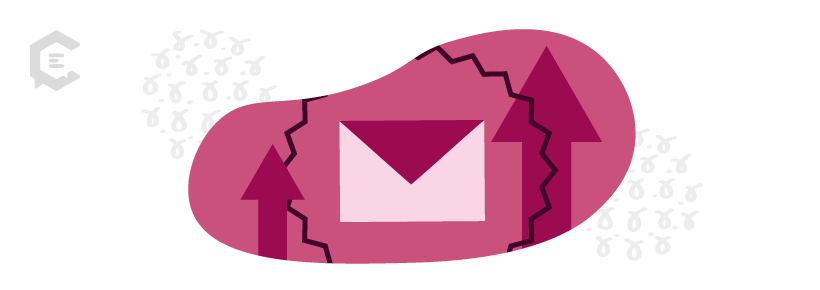Email marketing is an integral part of any digital marketing strategy. It can help you generate heaps of engagements, leads, and sales without spending boatloads of cash. Sadly, not all email marketing campaigns are equal. Some campaigns get very little to no engagements, let alone sales.
To help you get the biggest bang for your marketing buck, we’ll share ten types of tried and tested email marketing campaign ideas.
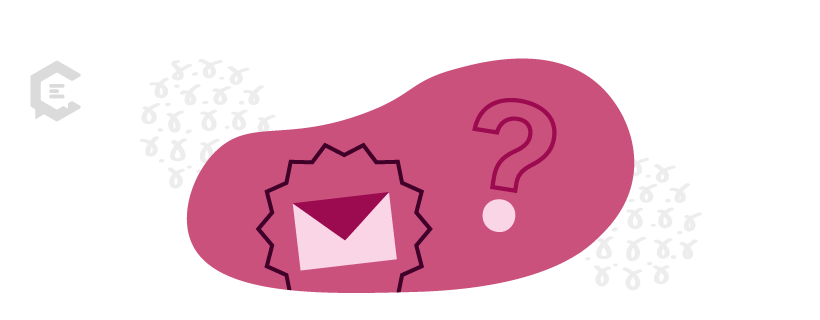
What is an email marketing campaign?
An email marketing campaign is a sequence of emails (or a single email) carefully planned to accomplish a marketing goal. You can use it to promote products, improve brand awareness, share content, collect feedback, and move leads down the sales funnel. Some email marketing campaigns are scheduled to drip-feed automatically, while some email campaigns are sent manually.
Benefits of an email marketing campaign
Here are some key benefits of email marketing campaigns:
1. Increase your sales
Run email marketing campaigns to target people who opted in to receive your email newsletters.
They are more likely to take action on your offers since they already know about your company.
According to statistics, up to 48% of customers purchase online or in-store after receiving a commercial email. 22% of these customers prefer to shop online, whereas only 6% shop exclusively in-store or via phone. A survey also revealed that email marketing campaigns have an ROI of $36 for every $1 spent.
The most profitable industries for email are retail, advertising, and PR, and they all enjoy an ROI of over 40:1.
Image Source: Litmus.com
2. You don’t need to invest a fortune
You don’t need to spend a wad of cash to use email marketing tools.
Most email marketing platforms don’t charge more than $100 monthly.
Some email marketing tools even offer a free plan which supports a limited number of contacts or emails per month.
Also, you don’t need to hire professional email designers since most platforms have professional-looking, customizable email templates.
3. Regular emails maintain and grow brand awareness
Those who aren’t ready to purchase tend to subscribe to a brand’s email newsletter. You can keep your brand top-of-mind by sending email messages until your list is ready to buy.
Studies show that 60% of consumers subscribe to mailing lists to get better deals—much higher than the 20% who follow on social media to get special offers.
Image Source: OptinMonster.com
4. Emails alert mobile users
Most email users check their inboxes on their mobile devices, which they carry everywhere.
Email apps also send audible and visible notifications to users whenever they get a new message. This improves the open and click-through rates of email marketing campaigns.
Statistics show that 47.22% of email conversions come from smartphones. That doesn’t include tablet conversions, which account for another 18.52%.
Image Source: MarketingProfs.com
5. Email campaigns let you send hyper-targeted content
Modern email marketing platforms have robust list segmentation features.
You can sort subscribers based on demographics, interests, previous interactions with your brand, and many more variables.
Advanced targeting lets you tailor email marketing campaigns to your audience’s needs and content preferences to get better results.
10 types of email marketing campaigns you should try today
To reap the full benefits of email marketing, you need to send the right campaigns that align with your brand’s marketing goals. Here are ten proven types of email marketing campaigns you should explore:
1. Welcome email campaigns
Welcome emails are sent automatically when someone subscribes to your email list or purchases a product.
These emails tell recipients what to expect from further emails and provide links to useful information about the brand and the product.
Welcome emails can also include videos, infographics, and downloadable resources. They entice the audience to take action or check out more of the brand’s content.
Below is an example of a simple welcome email by Toggl.com:
Image Source: Welcome email from Toggl.com
2. Customer onboarding campaigns
Customer onboarding campaigns help customers or subscribers learn more about your product.
Unlike one-off welcome emails, customer onboarding campaigns are drip-fed to subscribers.
The initial onboarding email may contain tips, FAQs, and links to valuable resources. Afterward, recipients receive emails with advanced tips and new goals to help them use the product better.
Here’s an example of the first onboarding email from Later which introduces the goal of adding a social profile.
Image Source: Onboarding email from Later.com
After completing the previous goal, their following onboarding email discusses other, more advanced features, such as scheduling, using the visual Instagram planner, setting up a bio link, etc.
Image Source: Onboarding email from Later.com
3. Pre-launch campaigns
Pre-launch email campaigns generate buzz around a product or service before its release. They use various promotion strategies, like contests, freebies, and exclusive offers.
Pre-launch campaigns highlight the benefit of purchasing early to drum up more sales.
For example, Profit Copilot’s pre-launch campaign emphasized that its coaching program has limited seats.
Image Source: Pre-launch campaign from ProfitCopilot.com
The email campaigns also promote relevant resources, like guides, eBooks, and checklists. These will help customers use and understand your product better.
4. Product launch email campaigns
Product launch campaigns focus on sales.
It is upfront and packed with psychological triggers that entice readers to click the “Buy Now” button and take action on your offer.
Mention your product’s name and add a CTA towards the beginning of the email to give your readers a glimpse of what’s ahead, and an opportunity to buy your product easily should they decide to.
Image Source: Product launch email from FoxGR.com
Remember, most subscribers already know about your product or service if you used a pre-launch campaign. But there may be subscribers who missed some emails.
Get them up to speed with a recap of the product’s highlights and features in your launch email.
5. Post-launch campaigns
Post-launch email campaigns are perfect for giving your customers the best after-sales experience.
These can overlap with other email marketing campaigns depending on your goals. One example is Instapage’s email requesting users to rate their experience.
Image Source: Post-launch email from Instapage.com
Post-launch emails can also invite customers to join a community, link to a product development roadmap, and share advanced tips.
6. Survey email campaign
Extract valuable feedback from your customers by sending survey request emails.
Similar to post-launch feedback requests, these campaigns allow customers to share product ratings. One key difference is survey email campaigns don’t necessarily come after product launches. You can send them at any time.
Survey emails sometimes offer incentives, like discount codes and gift cards, to encourage participation.
They can also contain links to a separate survey form, like Thinkific’s strategy below:
Image Source: Survey email campaign from Thinkific.com
7. Getting-to-know-you campaign
A Getting-To-Know-You or GTKY campaign is an advanced strategy for bloggers and experts that sell infomercial products. It is a drip campaign built around four emails:
- Email #1: Welcome new subscribers and set their expectations
- Email #2: Share your unique selling point
- Email #3: Reveal your past weaknesses to be more relatable
- Email #4: Tell how you overcame those weaknesses to reach where you are now
GTKY campaigns are a precursor to other email campaigns. They’re not used to close sales—they contain CTAs that segment readers based on how they answer questions. This builds trust and prepares subscribers for future promotions. Here’s an example of email #3 from Email Marketing Heroes—the brand behind GTKY campaigns:
Image Source: GTKY email from EmailMarketingHeroes.com
And here’s the question part of the same email that segments readers:
Image Source: GTKY email from EmailMarketingHeroes.com
8. Discount offer campaign
To get better results from your discount offer email campaigns, include instructions on how your list can claim your discount offers.
Doing so makes your recipients feel they earned the discount, making the experience more meaningful.
You can also send your audience a short “thank you” message when your company hits an important milestone. For example, SocialBee thanked subscribers for being a part of their journey before mentioning the 60% discount.
Image Source: Discount offer campaign from SocialBee.com
9. Limited-time campaign
Limited-time email campaigns are often used for promoting special events.
Similar to product launches, limited-time campaigns can include emails before, during, and after the event.
Get creative with your emails by offering various tiers of rewards to those who act fast.
Metricool did an exceptional job with their Black Friday campaign. After the emails leading to the event, Metricool offered a 40% discount to those who purchased within two days.
Subscribers who purchased two days later only received a 30% discount, whereas those who purchased even later only got 20% off.
Image Source: Limited-time campaign from Metricool.com
10. Birthday campaign
Birthday email campaigns are one of the most effortless automation workflows to execute. They simply require an opt-in form that asks for the subscriber’s birth date.
After obtaining the info, set up your email automation tool to send emails on your recipients’ birthdays.
Here’s an example of a birthday email from Nintendo.
Image Source: Birthday campaign from Nintendo.com
Top 13 email marketing tools you should use
Learning various email marketing campaign ideas is great, but if you don’t have the right email marketing tools, you’ll be hard-pressed to execute your campaigns effectively.
Check out the tools below before running your email marketing campaigns
Email marketing campaign management and automation
- Mailchimp
- HubSpot
- Sendinblue
- Keap
- Aweber
Form builders
- OptinMonster
- Instapage
- Typeform
- Gravity Forms
- Zoho Forms
Email analytics and tracking
- Mailtrack
- Right Inbox
- Salesloft
Email marketing campaign best practices
Use the best practices below to get better results out of your email marketing campaigns.
1. Use an open psychological loop. Use an “open loop” when ending emails in drip campaigns. These lines make subscribers look forward to the next email, like “keep an eye out for the next email to get the answer!”
2. Optimize emails for mobile. 70% of mobile users delete emails that aren’t optimized for smartphones and tablets. Use responsive templates or plain text to give your email list a better mobile experience.
3. Time your emails right. Studies show that the best times to send emails are 10 AM and 3 PM. Schedule your messages at these times instead of sending them right away to increase your open rates.
4. Insert an unsubscribe link. It’s against the law to send emails without providing subscribers with a clear way to opt-out. You should also include a feedback form for the people that unsubscribe to get their feedback and improve your email marketing strategies over time.
5. Split-test your email campaigns. Email marketing platforms encourage tracking your campaign’s performance to uncover improvement opportunities. Speed up the process by sending multiple versions of your emails simultaneously.
FAQs about email marketing campaigns
Below are some of the most common questions people ask about setting up or executing email marketing campaigns.
1. How to create an effective email marketing campaign?
Guide to creating an effective email marketing campaign:
- Understand your audience
- Segment your list
- Design your email or use plain text
- Use personalized email content (subject lines, intros, etc.)
- Leverage email marketing automation
- Optimize for mobile
- Time your emails
- Split test email campaigns to get the best results
- Document your strategy
2. How to create a successful email drip sequence?
Launch successful email drip campaigns by pre-planning follow-ups and setting reasonable intervals between emails. Use analytics and email marketing platforms to track metrics like open rates, unsubscribe rates, and click-through rates.
3. How to create an email marketing strategy?
Build a successful email marketing strategy using these steps:
- Identify your marketing goals
- Learn your target audience’s interests and content preferences
- Pick a campaign type
- Track your email marketing objectives and performance
Launch high-performing email marketing campaigns now
The email marketing ideas and tools above can’t do anything for you unless you take action.
Allow our seasoned email copywriters to create irresistible email content for you so you can focus on your core business activities.
Use the form below to get in touch with a content expert today!
